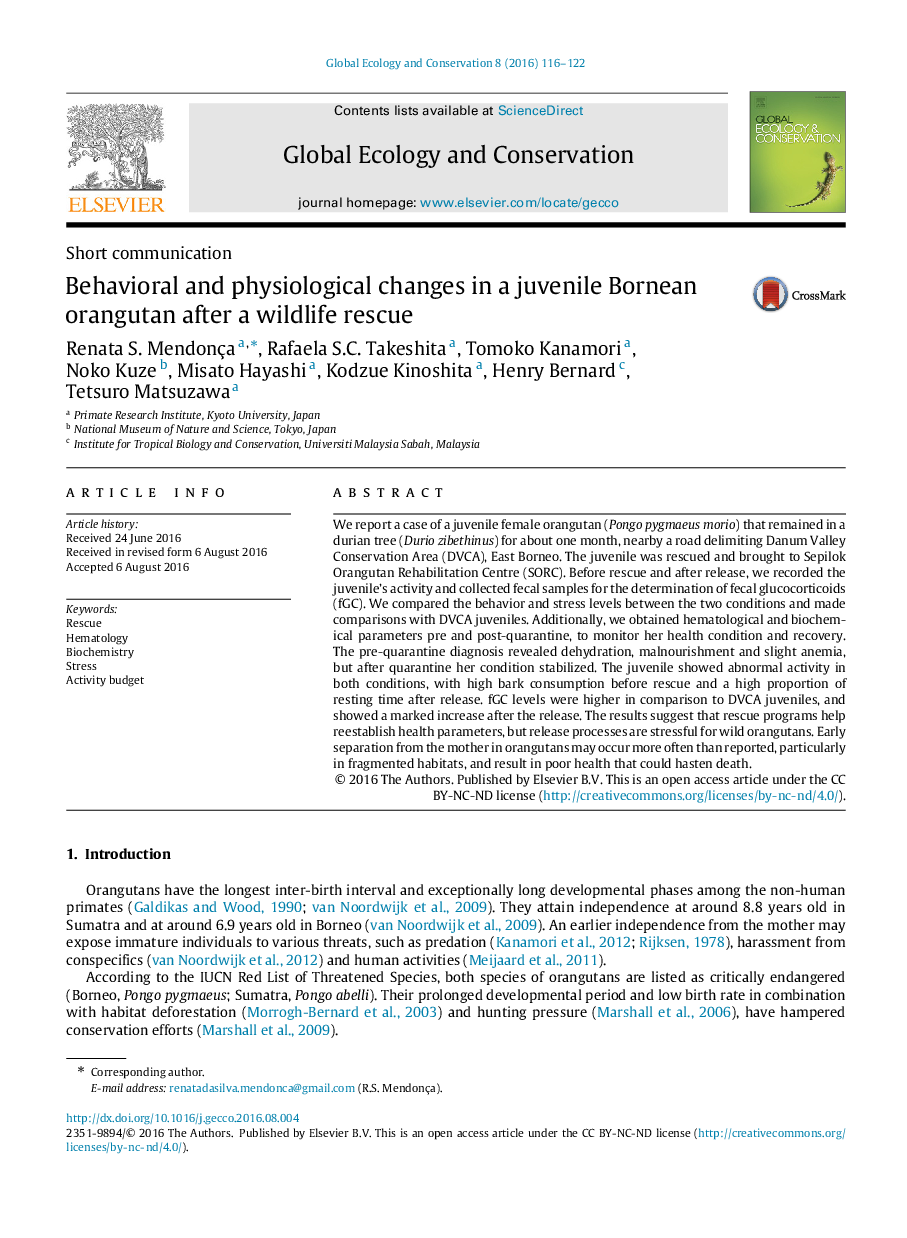| Article ID | Journal | Published Year | Pages | File Type |
|---|---|---|---|---|
| 4379438 | Global Ecology and Conservation | 2016 | 7 Pages |
We report a case of a juvenile female orangutan (Pongo pygmaeus morio) that remained in a durian tree (Durio zibethinus) for about one month, nearby a road delimiting Danum Valley Conservation Area (DVCA), East Borneo. The juvenile was rescued and brought to Sepilok Orangutan Rehabilitation Centre (SORC). Before rescue and after release, we recorded the juvenile’s activity and collected fecal samples for the determination of fecal glucocorticoids (fGC). We compared the behavior and stress levels between the two conditions and made comparisons with DVCA juveniles. Additionally, we obtained hematological and biochemical parameters pre and post-quarantine, to monitor her health condition and recovery. The pre-quarantine diagnosis revealed dehydration, malnourishment and slight anemia, but after quarantine her condition stabilized. The juvenile showed abnormal activity in both conditions, with high bark consumption before rescue and a high proportion of resting time after release. fGC levels were higher in comparison to DVCA juveniles, and showed a marked increase after the release. The results suggest that rescue programs help reestablish health parameters, but release processes are stressful for wild orangutans. Early separation from the mother in orangutans may occur more often than reported, particularly in fragmented habitats, and result in poor health that could hasten death.
